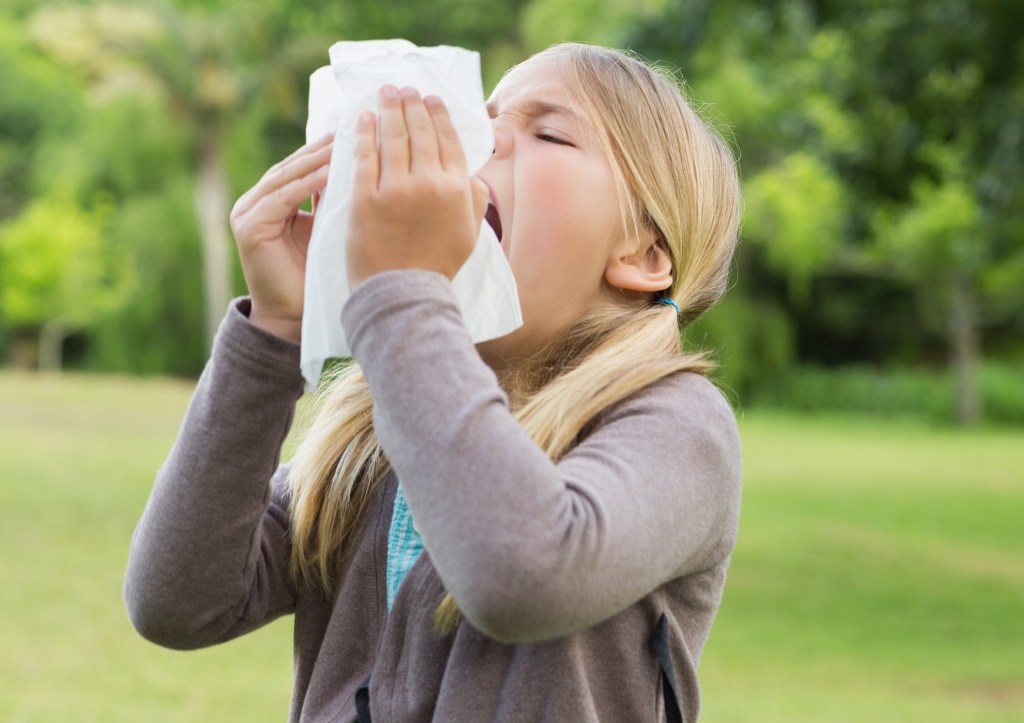Seasonal allergies are nothing to brew: they can cause sneezing, itching, a running nose and a cough that can last for weeks or even months.
In New York, spring starts the tree pollen season, followed by grass pollen in summer and weed pollen in late summer and autumn. Crossings that carry pollen from other regions, combined with warmer temperatures, make the symptoms more unpredictable.
When you breathe in pollen, your immune system releases histamine and other inflammatory mediators, causing common allergy symptoms. Unlike a cold, which is usually cleared in a couple of weeks, allergies can last much more, often starting with a running nose and progressing to nasal congestion, sinusitis, fatigue and headaches.
The good news? You don’t have to live in a bubble to manage allergies.
As a patient of allergies myself, my maximum advice is to start medicines early and use them regularly throughout the season. Here is what is inside my seasonal allergy tool kit.
Free sale drugs
Most front -line treatments are available in any pharmacy, without a recipe.
Nostril
While many allergies of allergies get the antihistamines first, a spray nose should be your day. Steroid nasal sprays reduce swelling and inflammation in the nasal passages, helping to relieve congestion over time. They do not work instantly, but they should be used constantly for several days or up to two weeks before complete relief.
Look for nostrils containing fluticasone or triamcinolone. I always recommend storing them when they are for sale.
To get the best results, sign the spray to the ear, instead of heading to the nose, for better absorption. Nasal rinse can also help eliminate allergens and irritants that we inhale throughout the day.
Oral antihistamines
Antihistamines in the form of liquid or pill can provide quick relief of seasonal allergy symptoms. For children with severe symptoms, combining antihistamines with a nasal spray can be even more effective.
Find brand or generic versions of non -seats such as ketirizin, levocetyrhizin, loratadin, and fexofenadin. They usually start working in 30 minutes and provide relief for 24 hours, compared to DIGENHIDRAMINA, which can make children asleep and last only six hours.
Ideally, start taking antihistamines and nostrils about two weeks before spring, usually around Valentine’s Day. If you haven’t started yet, it’s not too late, start now!
Eye drops
For itching and aqueous eyes, consider adding an allergy eye fall to your routine. Olopadin can help prevent the release of histamine, the main trigger for eye irritation.
The eye drops have different concentrations and, for children with severe symptoms, I recommend the highest concentrations once a day to relieve themselves throughout the day. Natural tears and warm compresses may also soothe irritation and keep your eyes comfortable.
Beyond medicines

Allergy features (immunotherapy)
If OTC drugs do not cut it, immunotherapy, such as allergy traits, can be the answer.
Most allergies do not recommend allergy features for children under 5, but for school -aged children and adolescents with persistent symptoms, allergy features can help desensible the immune system’s response to allergen.
Other options include subingue immunotherapy, which is approved by food and food administration for allergies to herbs, weeds and mites.
Lifestyle adjustments
Pollen is tiny and can travel long distances, so it is important to keep track of local pollen counts to minimize exposure at rush moments. I use an application called Ally Plus, which also oversees air quality.
Keep inside the high pollen days and opt for activities like movies instead of the park. If you venture, take medicines, including asthma inhalers and consider an additional dose if needed. Keeping your windows closed at home and your car can help keep pollen.
After being out, bathe immediately, wash your hair and change in clean clothes to prevent allergens inside. Bringing a N95 or surgical mask can help block pollen, while sunglasses and a hat can prevent pollen from sticking to hair.
And don’t forget to make an air purifier as an additional precaution. I have several devices in my house because of my dust allergy. For an air cleaner to do so, the environmental protection agency has a great suggestion.
When to see an allergic
If the symptoms persist despite using your allergy tool kit, it may be time to see an allergic to identifying the main cause. Children should not lose their school and you don’t have to miss their job due to seasonal allergies.
If the allergies lead to complications such as chronic ears or sinus infections, asthma attacks or eczema flares, a specialist can help.
Allergies tests can provide peace of mind and important information on the exact reason for the hustle and bustle. What seems to be pollen allergies can be triggered by dust mites or pet allergies, which require medicines throughout the year and different management strategies.
In the pediatric allergy program, we can guide your family through treatment and test options. In addition to doctors and nurses, our team includes a child life specialist and a psychologist, provided by the Institut Sala de Centrada de la CHILDRENA and the family, who can provide comfort and support during the tests.
While some people overcome seasonal allergies, the waiting game is unpredictable. Taking proactive steps before the allergies season can make a big difference in the way you feel. With right medicines, lifestyle adjustments and expert guidance, seasonal allergies should not take care of your life.
Kanwaljit (Rupam) BRAR, MD, is a specialist in pediatric allergy with advanced training in dermatology. Patients are coming to the pediatric allergies program at Hassenfeld de Nyu Langone Children’s Hospital. It manages all the allergic conditions of the children, including food allergies, rhinitis, eczema and asthma.
#spring #allergy #season #Minimize #symptoms #tool #kit #approved #doctor
Image Source : nypost.com
